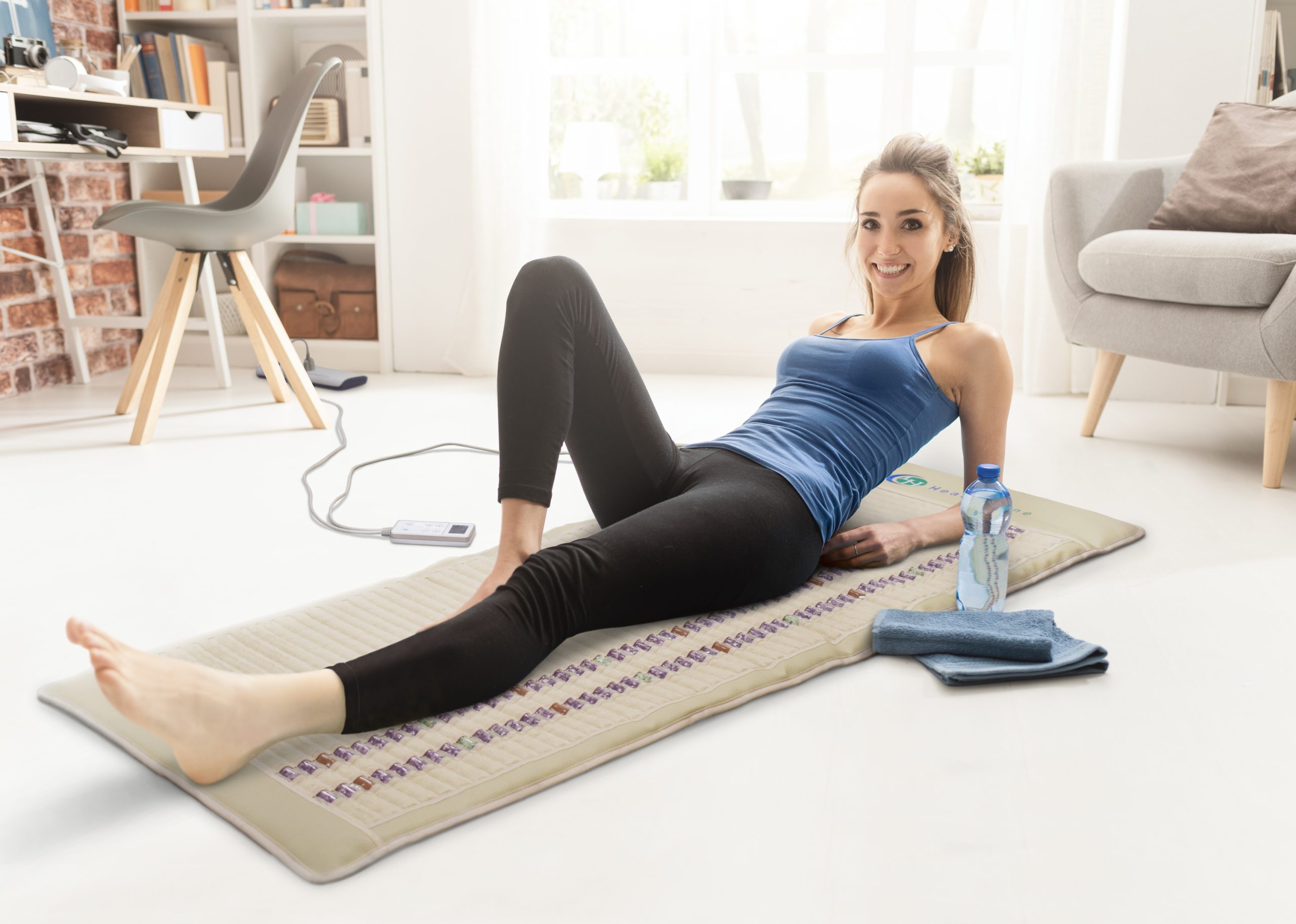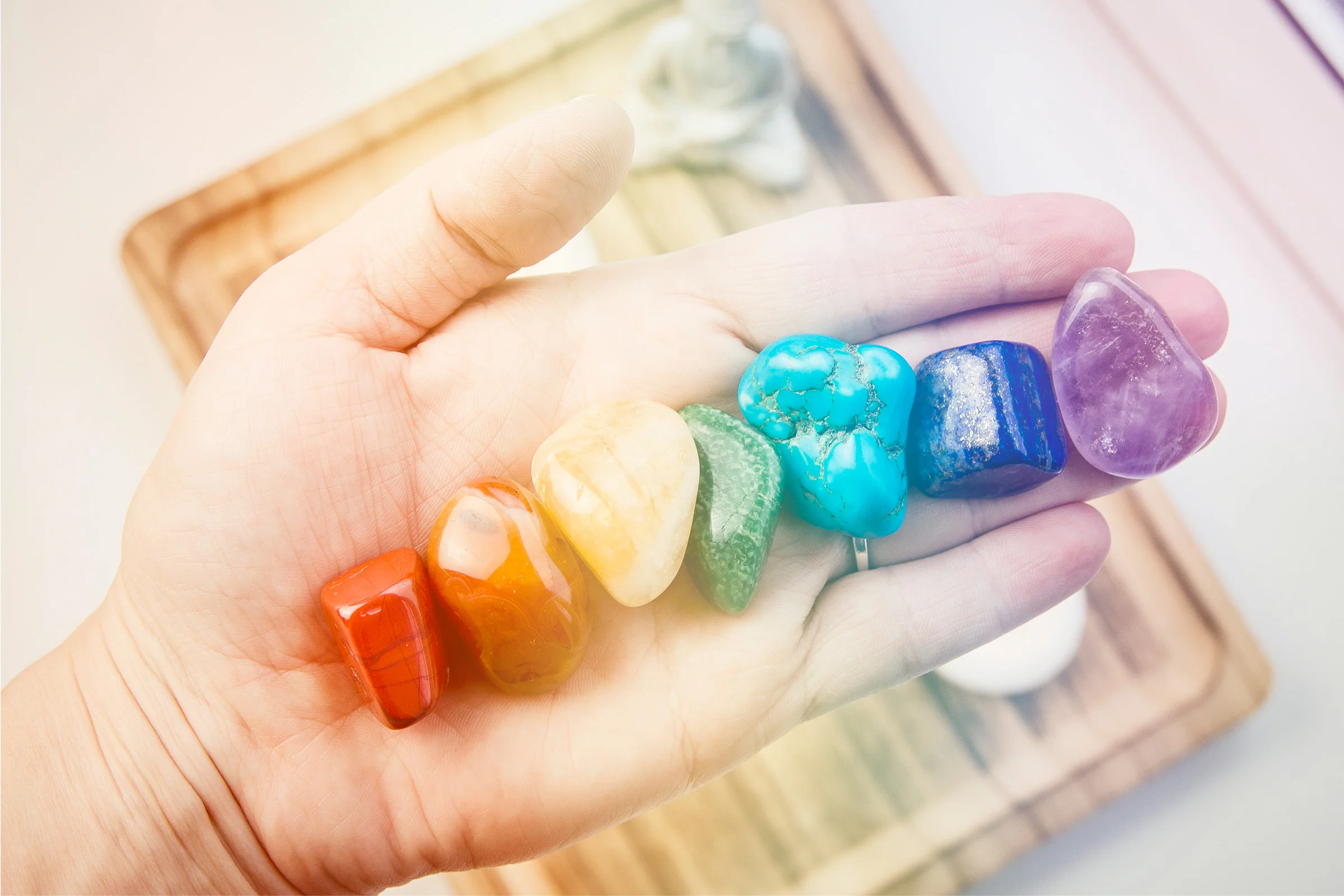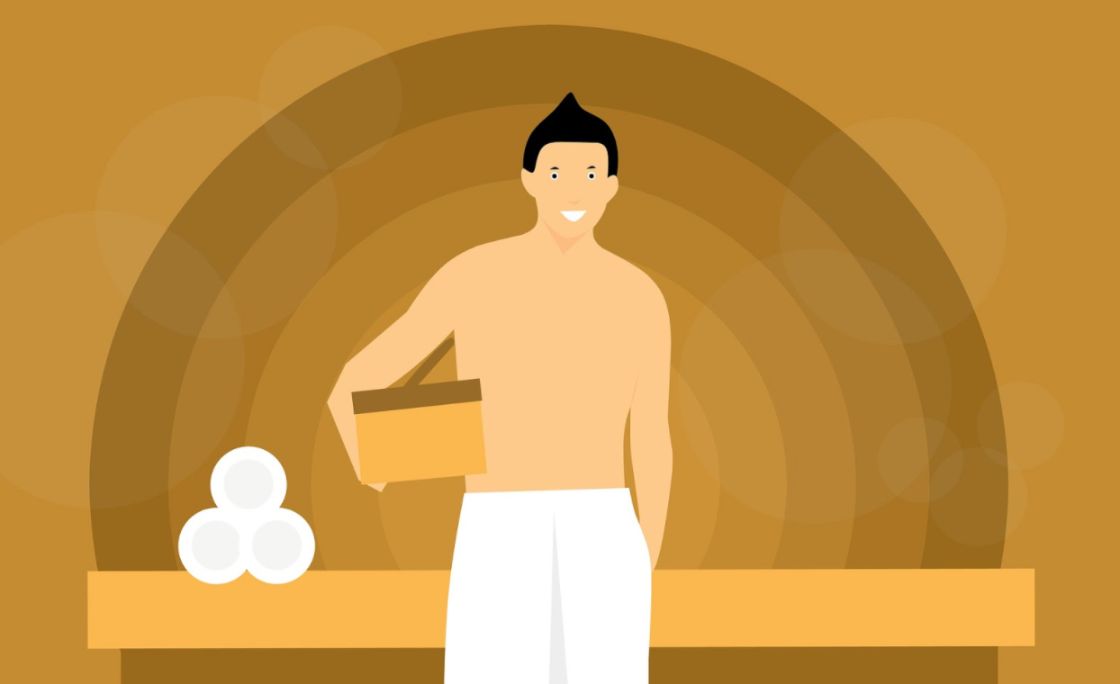Stunningly, every 1 in 3 Americans faces issues with high blood pressure, also referred to as hypertension.
Hypertension rates only continue to increase, with the majority of these occurrences lacking an identifiable cause.
Deemed primary hypertension, this condition can be life-threatening without proper lifestyle changes.
Healthy blood flow throughout the body is vital for human health.
This process is responsible for distributing oxygen to cells and organs while removing carbon dioxide along with other wastes from the body.
The heart facilitates these actions as a result of the pressure it creates when it beats.
This pressure pushes the blood through the arteries and veins.
Hypertension occurs when the body overworks itself in order to pump blood throughout the body.
This can lead to the over-stretching of arterial walls, and result in tears that become landing spots for cholesterol, plaque, and blood cells.
Ultimately, this can result in the development of blood clots.
Furthermore, oxygen depletion throughout the arteries can cause tissue damage.
Steadily increasing blood pressure may also have severe adverse effects like heart attack and stroke.
Consulting with your doctor about optimizing your heart health is important.
However, considering changes in diet and exercise while increasing mindfulness may be viable options to reducing high blood pressure.
Instead of immediately resorting to drug therapy, learn how to lower blood pressure naturally with these simple lifestyle alterations.
Cut Down On Caffeine
Presently, there is only a small amount of data collected on the association between blood pressure and caffeine.
However, some doctors advise people with high blood pressure to reduce their intake of caffeinated beverages.
Essentially, the possibility of an increase in blood pressure does exist but may vary by individual.
If you’re not keen on giving up your caffeine then you can conduct your own experiment.
After consuming a caffeinated beverage, check your blood pressure before thirty minutes have passed.
An increase between 5 to 10 mm Hg indicates sensitivity to caffeine and its ability to increase your blood pressure.
For life-long caffeine consumers, removing or cutting back favored beverages like the coffee can be quite a compromise in the beginning.
However, doing things like getting more sleep and replacing sodas with carbonated water and coffee with non-caffeinated teas can make this process much more tolerable.
What you’ll need:
Coffee drinkers:
- Your favorite un-caffeinated tea in bags, or loose-leaf
- 6 Cups of water
- Extra-large Mason jar with lid
Soda drinkers:
- 1 Liter carbonated water
- 1 Tray of ice cubes
- 1 Cup strawberries
- 3 Mint sprigs
- Juice of 4 medium-sized lemons
- Extra-large Mason jar with lid
Directions
Coffee Drinkers:
- Prepare six cups of your favorite uncaffeinated tea by following directions on the tea box.
- Let the tea cool for 1 hour, and then fill an extra-large mason jar with 1 tray of ice cubes.
- Store in the fridge and drink 1 cup when your caffeine craving hits.
- Add honey when the tea is still warm for added sweetness.
Tip: Blueberry tea is rich in hypertension-fighting flavonoids.
Soda drinkers:
- Combine all ingredients into the Mason jar.
- Mix the liquid and apply mild pressure to the strawberries with the mixing spoon.
- Let the water infuse in the fridge for 12 hours before enjoying.
Limit Alcohol Consumption
Generally, drinking small amounts of alcohol is not dangerous for people with high blood pressure.
However, more than one drink a day for women and more than two a day for men can increase blood pressure by several points.
Risk actually increases for the elderly.
For people over 65 who have been diagnosed with hypertension, abstaining from alcohol is recommended.
Drinking alcohol can also reduce the effectiveness of blood pressure medication.
One drink can be measured as a glass of wine or bottle of beer.
What you’ll need:
Willpower!
Directions:
Be mindful of placing yourself in situations where you may want to increase the limit from one drink.
If these situations are unavoidable, then try not drinking at all.
Replace alcoholic beverages at dinner with infused teas and fresh juices, as being readily equipped with appealing alternatives will make not drinking more desirable.
Less Salt
The most publicized lifestyle change in regard to lowering high blood pressure is cutting back on salt.
Interestingly, the salt itself is not the problem, but instead the sodium within it.
If you consume too much salt, then the fluids in your body will become imbalanced.
This results in your body working overtime to try to flush the excess sodium from your system.
Your body responds by sourcing water from surrounding tissue.
As the volume of water needed increases, so does how hard the heart is working to pump blood.
Ultimately, this sequence leads to an increase in blood pressure.
Maybe you think you don’t add that much salt directly from the shaker to your food, but this does not mean that your salt intake is at a suitable level.
Significant amounts of salt can be found in processed foods, fast foods, and food prepared outside of the home.
Therefore, it is important to not only read labels cautiously at the grocery store but also cut out fast food and limit eating food that you did not prepare.
The daily maximum amount of sodium for people without high blood pressure is around 2,300 milligrams.
Men, African Americans, and people over 51 should not consume more than a ½ TSP of salt a day.
Microwavable meals, like traditional turkey dinners, for example, contain 5,400 milligrams of sodium!
You can see how easy it can be to intake nearly double the healthy limit of sodium if you’re not paying attention.
In fact, some food products labeled with descriptions like “low-fat” or “no sugar” may seem safe to add to your shopping cart, but be aware that many times these products contain high quantities of salt.
It is important to acknowledge that like sugary foods, salty foods can become mildly addictive and, for some of us, this may be one of the most desirable flavors we seek in our food.
However, there is a vast array of spices in the world to open up your taste buds to.
Being adventurous can help you replace your desire for salt with a more developed palette of flavors.
Ultimately, you may end up discovering that you were missing out on many foods you thoroughly enjoy.
Low-sodium based diets worth checking out are the vegan diet and the temple food diet.
These diets are oriented toward conscientious eating for health.
Trying new foods, especially health food, may sound undesirable and intimidating.
However, keep in mind a basic concept endorsed by neuroscientists, known as “neuroplasticity,” or the brain’s ability to rewire itself.
This means that by changing your habits, over time you actually change your brain.
So what is undesirable now can actually become desirable in the future.
In this instance, gradually incorporating new foods into your low-sodium diet is advised.
Bon appetit!
What you’ll need:
- Bragg’s amino acids
- Kelp flakes
- Himalayan pink salt
Directions:
Experiment with different dishes by replacing salt with these lower sodium-content alternatives.
Refresh with Coconut Water
Fortunately, natural ways to lower blood pressure are not all based on deprivation.
In fact, these remedies are also about integration.
We will now direct our attention to many delightful beverages and foods, like the refreshing coconut water extracted from raw coconuts.
Coconut water is high in potassium and magnesium which benefit muscle function, making it beneficial to heart health.
Remember, if you’ve been diagnosed with hypertension then the most important muscle, your heart, is overworking itself.
In studies, coconut water had an effect on systolic blood pressure, which can be thought of as what takes place when the heart pumps blood outward.
Some people have reported success in lowering their blood pressure after introducing coconut water in their daily diet.
What you’ll need:
- 8 ounces of coconut water from a raw, organic coconut
Directions:
Enjoy 8 ounces of coconut water up to two times daily.
Coconut water can be paired with other raw juices to cut down on the tropical taste if you don’t have a preference for coconut.
If preferred, juice your favorite fruits like apples, blueberries, or pineapple.
Add 4 ounces of the fruit or vegetable juice to the coconut water. Drink up!
Get Garlicky
Studies show that garlic tablets induce the release of allicin, a sulfur-containing compound that is attributed with the health benefits of garlic.
Allicin is one of the effective natural ways to lower blood pressure.
However, it does not withstand stomach acid.
Therefore, eating raw garlic will not allow you to access the beneficial properties of allicin.
Fortunately, there is a loophole!
Ingesting garlic tablets will guarantee that your body receives the allicin.
Some individuals who incorporated garlic tablets in their diet saw a 10% decrease in their blood pressure over just a few months.
Garlic has been revered across cultures and generations for its medicinal properties.
Adding garlic pills to your diet will also result in immune-boosting benefits, which are far more desirable than the side-effects associated with pharmaceutical drugs.
What you’ll need:
- High-quality organic garlic tablets
Directions:
Use the directions on the bottle to determine the proper daily dosage.
More Melons
The amino acid citrulline is an organic compound found in watermelon
Through a series of conversions, citrulline results in the production of nitric oxide.
Nitric oxide helps regulate the rate at which your blood pumps through your body.
It even widens blood vessels, which reduces blood pressure, as mentioned earlier.
Eating melons is one of the ways to lower blood pressure and treat your taste buds.
So, don’t limit yourself to a watermelon at summertime BBQs!
Consuming watermelon every day is not only one of the great ways to lower blood pressure, but is also a great way to stay hydrated (92% of watermelon’s composition is water).
In addition, people who love to garden should consider planting their own.
Watermelons thrive in warm weather, and a single plant will produce up to three melons per vine.
Furthermore, once the plant has reached maturity it only takes a melon two weeks to ripen.
What you’ll need:
- Organic ripe watermelons
Directions:
Slice the melon your preferred way and enjoy!
Juice the melon, and add mint, lime, and ice for a refreshing drink on warm days.
Blueberry Syrup
Another source rich in flavonoids promoting heart health is berries.
To ensure daily access to their medicinal properties, make a syrup that you can stow in your fridge for up to four weeks.
Skip the stuff you’ll find on the grocery store shelf, though, because it is full of unneeded sugar.
What you’ll need:
- 8 tablespoons of dried blueberries
- 4 cups of water
- 1 cup of honey
Directions:
Simmer the blueberries in water until the liquid is reduced by half, and then strain out the solid remains.
Combine the liquid and honey over low heat for 20 minutes, or until desired thickness is achieved.
Store the syrup in a jar with an airtight lid, and enjoy 1 TBSP twice daily.
A batch will keep in the fridge for up to four weeks.
Get Good Fats from Fish Oil
In recent years, fish oil has become one of the most popular treatments in health food, and for good reason!
Essential fatty acids like omega 3s carry many medicinal properties.
One of the benefits is the promotion of heart health.
Fish oil reduces bad cholesterol and increases good cholesterol while lowering blood pressure.
In fact, patients who’ve received heart transplants have actually used fish oil after surgery to help reduce the likelihood of hypertension.
This is one way recommended by doctors for how to lower high blood pressure.
What you’ll need:
- High-quality fish oil; cod liver oil is recommended.
Directions:
Follow the directions on the bottle; dosage will vary by which brand and form of the product you choose.
Mix Up some Cat’s Claw
Native peoples in South and Central America have been reaping the benefits of cat’s claw for centuries.
Cat’s claw dilates the blood vessels, which results in the lowering of blood pressure.
It acts as a mild diuretic; you’ll receive the desirable side effect of unneeded salt and water removal from the body.
Combined, both effects will contribute to the reduction of hypertension.
Keep in mind that cat’s claw should not be used by women who are pregnant.
What you’ll need:
- 1-2 tablespoons of dried herb
- 1 ½-2 cups of cold water
- Honey or lemon to taste
Directions:
Combine water and herb in a small saucepan and simmer for 45 minutes.
Strain the liquid and add honey. Cat’s claw can be drunk once daily.
Enjoy Some Tea
Tea lovers rejoice because you can actually treat your taste buds as you combat hypertension.
These home remedies for high blood pressure are all completely herbal.
Hawthorn
Rich in the flavonoids oligomeric procyanidins and quercetin, Hawthorn promotes optimal heart health.
Hawthorn is actually known to fight heart disease and reduce arterial blood pressure, as well as the risk of hypertension.
Flavonoids actually contribute to the widening of the blood vessels, resulting in lowered blood pressure.
What you’ll need:
- An organic loose-leaf tea, or tea bags.
Directions:
Follow the directions on the box.
Enjoy up to two cups of Hawthorn tea a day. Add a small amount of raw honey, or drink plain.
Hibiscus
Amazingly, research has determined that hibiscus mimics the angiotensin-converting enzyme inhibitors.
These ACE inhibitors are a pharmaceutical medication prescribed to patients to lower blood pressure.
Drinking hibiscus tea is one of the home remedies for high blood pressure that you can replace trips to the pharmacy with.
What you’ll need:
- 1-2 teaspoons of dried hibiscus
- 1 cup of fresh, piping hot water
- 1/2 teaspoon Honey
Directions:
Enjoy up to two cups daily of hibiscus tea, year-round!
Bring the water to a boil and steep the leaves for 8 minutes.
Strain the leaves out and enjoy plain, or by adding honey.
Ginger-Cardamom
A good choice for fall and winter, this blend will ignite your senses, warm you up, and increase your circulation.
Biochemists have yet to pinpoint exactly which component of this blend causes the reduction of hypertension.
However, they have identified successful results amongst individuals who used the mix daily over the course of several weeks.
Look for a loose-leaf blend at your favorite spice shop, or mix it up yourself with the following ingredients:
- 1/2 Cup of water
- 2 TSP of honey
- 1 TSP of cardamom pods
- 2 TSP minced fresh ginger
- 1 TSP of cinnamon powder
- 1 Teabag of black tea (if you passed the caffeine test), or your favorite non-caffeinated alternative
- 1/2 Cup of milk
Directions:
Crush up the cardamom pods with a mortar and pestle to release the oils and increase the aroma and taste.
Other than the honey, combine all of the ingredients in a saucepan and simmer for up to 9 minutes.
Once the concoction has reached a caramel brown color, stir in the honey, and then strain the liquid into a mug.
Enjoy this blend 1-2 times a day.
Maintain a Healthy Weight
According to the American Heart Association, shedding even a few pounds can help prevent high blood pressure for people with a BMI of more than twenty-five.
Excess weight actually increases strain on the heart, which can result in damaged blood vessels, hypertension, and heart disease.
In essence, excess weight is another cause of overworking the heart, which we know is harmful to people with hypertension.
Start this transition by consulting with your doctor or nutritionist about what a healthy weight means for your body type.
What you’ll need:
- Weight consultation
- Exercise plan
Directions:
Begin by seeking a consultation with a health professional to help you determine a healthy weight for your body type.
Follow this visit by slowly integrating diet and exercise changes into your daily routine.
Exercise Every Day
The best approach to strengthening our muscles, like the heart, is exercise!
Exercise can effectively lower blood pressure over time due to increased quality in the condition of the heart muscle.
By strengthening your heart with exercise, it will be less taxed when it pumps blood.
Therefore, your heart will be able to pump blood without overexerting itself.
Exercise is especially effective in lowering systolic blood pressure, which means it will help your heart when it is pushing blood outward into the body.
Getting thirty minutes of exercise daily can greatly improve your heart health.
It is important to find an activity that you genuinely enjoy.
Going to the gym isn’t for everyone. It may be best for you to rethink how you interpret exercise.
Getting outside to hike, bike, kayak, or simply walk your dog are all alternatives to a mundane exercise routine on a treadmill.
Also, the way you exercise can vary.
You don’t need to feel pressure to meet a very “specific” goal every day.
Instead, try to focus on incorporating exercise into an activity you enjoy.
Linking up with an exercise buddy also aids in staying motivated.
What you’ll need:
- Motivation
- A desirable activity
- Exercise buddy (optional)
Directions:
Choose an exercise activity and engage in it for thirty minutes a day.
Over time, gradually increase the length of time.
Mindfulness
Above all, maintaining a healthy lifestyle begins with a healthy mindset!
Being mindful means consciously engaging in behavior that benefits you.
You are the only person who can truly hold yourself accountable for your actions.
Mindful practices for reducing hypertension are reduction, integration, and action-oriented.
Are you paying close attention to reducing your salt intake? Are you integrating heart-healthy foods and beverages?
Are you taking actions to increase your physical activity?
Being mindful of these questions throughout the day will help you stay on track.
Breathe and Relax
Becoming overly stressed causes more than just uncomfortable emotions to surface.
The body releases adrenaline and cortisol in reaction to stress.
These hormones prep the body for a “fight or flight” response.
As a result, heartbeat increases and blood vessels constrict.
This constriction is only temporary, and “fight or flight” reactions are actually desirable, preventing us from engaging in harmful situations.
However, if you’re living in a constant state of stress, then your body is experiencing this process more than is healthy.
Reducing the severity of your reaction to stressful situations has to start with you.
Being practical in your approach is key. First, acknowledge that you have control of your choices.
If you need to say “no” then say it; do not over-extend yourself.
On that same note, allow yourself reasonable timeframes to complete tasks.
Don’t overfill your plate, because then you’ll be risking results that include stress and disappointment.
Furthermore, realizing you can’t control everything about the world around you, but you can control your reaction, will reduce your stress levels dramatically.
Last, remember what you’re thankful for, seek nurturing relationships, and practice relaxation exercises.
What you’ll need:
- 15 minutes of alone time in a quiet setting per day
Directions:
Sit on the ground with your legs crossed while resting your palms facing up on your kneecaps.
Close your eyes and slowly deepen your breath.
Allow thoughts to fade away as they enter your mind.
Choose a mantra to repeat to yourself, or simply meditate upon the silence.
Set Goals
Maintaining a healthy lifestyle and keeping your blood pressure down involves diet, exercise, stress reduction, mindfulness, and support.
Follow up by setting obtainable goals and slowly integrating lifestyle changes.
Jumping in all at once can be shocking for your body, and places you in a position where you’ll be more likely to revert back to old habits.
Don’t overwhelm yourself with too many immediate changes.
This process is one to be treated carefully over time.
Seeking support from a family member, friend, or loved one can help maximize your success.
What you’ll need:
- A day planner for all 365 days of the year
Directions:
Record goals, write down reminders and plan out how you’ll incorporate the lifestyle changes discussed previously.
Writing down your expectations and aspirations will keep you grounded and help you stay on track.
Clarifying What Your Blood Pressure Scores Mean
Now that you’re equipped with knowledge about how to lower your blood pressure naturally, you’ll want to do more than just monitor the numbers associated with your success.
You might be curious to know exactly what the numbers the nurse calls off when she measures your blood pressure represent.
Your blood is pumped through the body by two forces.
When the heart contracts it pumps blood outward into the body, known as systolic pressure.
In between beats the heart rests and refills with blood, known as diastolic pressure.
In order to be in the clear for pre-hypertension and hypertension, your systolic score needs to be less than 120.
Your diastolic number should be below 80.








